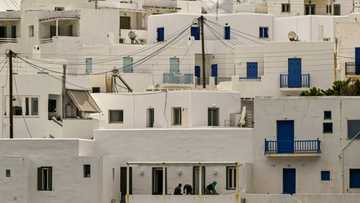Japanese New Year: This is why the Japanese lunar year is so important
As the world says goodbye to 2023 and ushers in 2024, different communities have their style of celebrating New Year. Some have deep-rooted traditions that have been passed down to generations. One such celebration is the Japanese New Year, also called Shōgatsu.

Source: Getty Images
The people of Japan did not properly celebrate Shōgatsu to usher in 2020-2021 because of the ravaging COVID-19 pandemic that affected celebrations worldwide. This year, things are almost back to normal, and most people are with their families to welcome the New Year.
What is the Japanese New Year called?
New Year is called Shōgatsu in Japan, and it is one of the most important holidays of the year. No business is done from January 1st to January 3rd, and those in cities usually travel back home to spend time with loved ones. Everything that must be done should be carried out by New Year’s Eve, also called Omisoka.
Japanese New Year origin dates back to 1873 when the country adopted the Gregorian calendar. Before that, the people celebrated based on the lunar cycles.
Why is the Japanese New Year so important?
The Japanese believe that each year is entirely different from the previous one. Everything needs a fresh start as the year begins. The problems of the ending year should not be crossed over to the new one.
How does Japan celebrate the Lunar New Year?
What is the New Year tradition in Japan? The people observe several practices that have been done for many years. Popular Japanese New Year traditions include;
Oosouji/Big cleaning

Source: UGC
In Japan, it is a custom that the new year should find everything spotless. The Japanese engage in general cleaning in all corners of the house, including places that are rarely used during the year. The gods (kami) are also believed to visit homes during Shōgatsu and should find them clean.
Bonenkai parties
The year-forgetting parties are held to ensure the old year’s problems do not cross over to the new one. People have fun which helps them start over with new things to focus on.
Japanese New Year decorations (Kadomatsu)

Source: Getty Images
Entrance gates and homes are decorated with pine, bamboo and plum trees which represent longevity, prosperity, and sturdiness, respectively. The green decoration is put right after Christmas and stays until after the first week of January. The kadomatsu tradition is believed to offer temporary housing for the Toshigami sama to ensure great harvest and blessings from ancestors.s
Japanese New Year food
During New Year’s Eve (Omisoka), the people usually eat toshikoshi soba, also called buckwheat noodles. These symbolize longevity. They also serve ozoni (a soup with mochi), otoso (sweetened rice wine), and osechi ryori dishes on January 1st.
The osechi-ryori is prepared in advance or in modern days bought in advance then served on New Year’s lunch. Most Japanese prefer herring roes, burdock, kuromame simmered black soybeans, mashed chestnuts and sweet potatoes.
Hatsu-Hinode (First sunrise)

Source: UGC
Another important tradition is watching the first sunrise (Hatsu-Hinode) on New Year. The sunrise is seen as a representation of the entire year that has just begun. The whole of New year day (Ganjitsu) should be a happy occasion, everything should be clean, and nobody should work.
Visiting the temple (Hatsumode)
The Japanese usually go to the temple or shrine to pray for health and good fortune during the first few days of January. At the altar, the people throw some coins into a box, sound a gong to ensure the gods are awake and listening, bow twice, clap twice and bow again before making their prayer.
Buddhist Joya no Kane

Source: Twitter
At around midnight on New Year’s Eve (Omisoka), you will hear bells ringing in Buddhist temples for more than an hour. The bells are rung exactly 108 times representing earthly desires called Bonnou. Each strike of the bell removes one troubling Bonnou, and after the 108th strike, you will be ready to start a new year free of problems.
Sending New Year’s cards (Nenjajo)
Cards marked to be delivered on January 1st are sent to family, friends, and work colleagues. In 2024, the cards will feature Dragon designs because it is the year of the Dragon according to the traditional Chinese zodiac.
Japanese New Year facts
Here are quick fun facts about the Japanese Lunar New Year.
- Everything must be spotless clean by January 1st.
- Nobody should work; all duties must be completed on Omisoka (New Year’s Eve)
- Entrance gates and homes are decorated with pine, bamboo, and plum trees.
- The people eat toshikoshi soba (Japanese noodles) to represent longevity.
- The Japanese go to the temple to play for health and good fortune.
- New Year’s cards featuring a Chinese Zodiac for the year are sent to friends and family on January 1st.
- The Buddhists strike the bell 108 times just before Omisoka’s midnight to ensure people cross over to the next year without burdening problems.
The Japanese New Year is a fascinating tradition that helps people start the new year on a clean slate. Shōgatsu could be the best time to tour Japan and experience the magical custom that is different from the normal fireworks and champagne of Western culture. Happy New Year 2024!
READ ALSO: 100+ inspirational Bible quotes that are as good as medicine
As you start new year it is vital that you get inspired and ready to take on what the new year brings. Holy books, including the Bible and the Quran, are a great source of motivation that empowers you both spiritually and mentally.
Briefly.co.za highlighted some inspirational quotes from the Bible that uplift your spirit and give you the courage to face different life situations. As an individual, you won personal battles in 2023 and hope that 202 will be a better year.
Source: Briefly News






